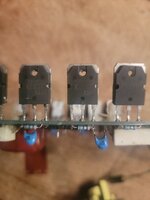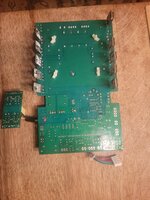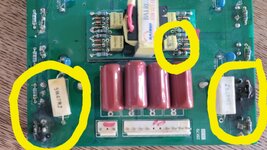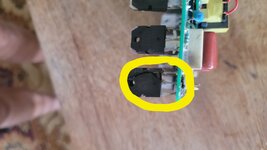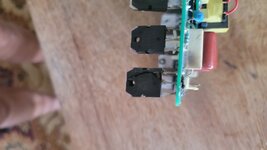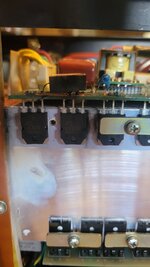neal.iweb
Newbie level 4
For a multiprocess welder, I cannot find compatible replacement mosfet and their resistor parts. Of the (12) twelve K2837 mosfets and the (12) twelve 1.9 ohm 1/4W +/-0.25 tolerance resistors across them, the board fried 2 mosfets and the 2 resistors across them. Two problems… Can anyone please confirm the actual and correct specification datasheet for the K2837? 1.9 ohm resistors are not available anywhere that I have looked. I want to replace all 12 mosfets and the 12 resistors that would match the 12 mosfets. The datasheets for those K2837 that I have found – provide contradictory info. Several show the part as being the same specs as for the 2SK2837, but were labeled for the K2837. Other ones show specs with higher values across several specs for the K2837. I do not know what specs I should be shopping around for.
At this point, if I use the higher specs that do not match the 2Sk2837 mosfet, then the suitable replacement mosfet for the K2837 is part number FQA24N50. Can anyone confirm this or provide a compatible mosfet for my welder? Please tell me if the following are minor differences and if the FQA is the replacement that I need.
The differences in the two mosfet’s datasheets I found are:
Is it safe to say that the FQA is an adequate replacement? Does higher power have potential to damage other components? Are the Derating Factor, Thermal Characteristics, and the Static Drain Values On-Resistance values similar enough to be able to use?
If I go with the FQA24N50, what is the correct resistor value for that mosfet?
Thank you.
At this point, if I use the higher specs that do not match the 2Sk2837 mosfet, then the suitable replacement mosfet for the K2837 is part number FQA24N50. Can anyone confirm this or provide a compatible mosfet for my welder? Please tell me if the following are minor differences and if the FQA is the replacement that I need.
The differences in the two mosfet’s datasheets I found are:
- The K2837 has Derating Factor above 25C at 2.22W/C and the FQA is at 2.33W/C. As a reminder, the current Upper Board has 1.9 ohm resistors.
- the K2837 has Power Dissipation of 271W and the FQA24N50 has Power Dissipation of 290W.
- The Thermal Characteristics, are that the 2837 has .46C/W, and the FQA has .43C/W
- The Static Drain Source On-Resistance on the K2837 is showing “Typical” as .16 ohms, versus FQA as 0.156 ohm, and the Max for the K2837 is 0.19 ohm, and the FQA is at 0.2 ohm.
Is it safe to say that the FQA is an adequate replacement? Does higher power have potential to damage other components? Are the Derating Factor, Thermal Characteristics, and the Static Drain Values On-Resistance values similar enough to be able to use?
If I go with the FQA24N50, what is the correct resistor value for that mosfet?
Thank you.
